(cuts to Yves in his kitchen)
Yves: Bonjour, bonjour little animals out there! Today, we will make fly soup. First, you need soup. Easy, no? (grabs a can of soup and pours it into a bowl) Now, we wait for flies. (flies soon fly around the soup) Look, flies. Now, we need to trap them. (places a small dome over the bowl) There. Simple, no? Now, we bring this to our next guest, who I’ve been told is a salamander, which eats flies.
(cuts back to Stinky and Jake)
Jake: And now, from the swamps of the world…
Stinky: World.
Jake: Give it up for Ned the Salamander!
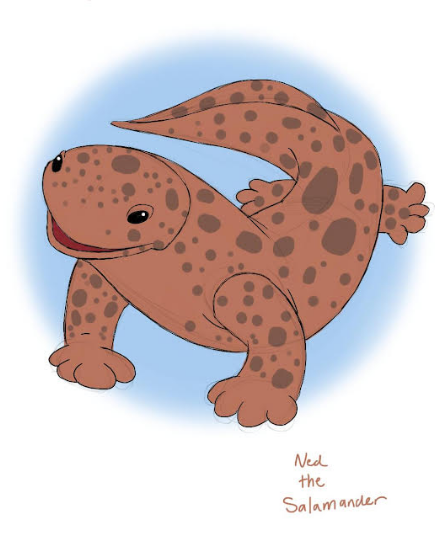
Stinky: Wow, you’re huge!
Ned: I know. I’m a Japanese giant salamander. (Yves runs over to give Ned his soup)
Yves: Here you go! Fly soup. (takes off the dome, only for the flies to fly off and laugh)
Jake: Sorry to see your lunch fly away.
Ned: That’s okay. I’ll still have the soup! (eats the soup while Yves walks off)
Stinky: You have legs like a frog, and a tail like a fish. That means you’re not a lizard.
Ned: Of course, not. We’re amphibians!
Jake: Tell us more about giant salamanders, Ned!
Ned: Glad to.
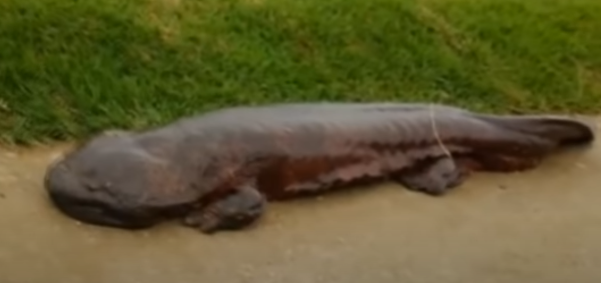
We normally need to live in water at all costs, but if necessary, we can walk on land. While other animals have two lungs, giant salamanders only have one.
Stinky: One lung?! That must be tough. Can we see more salamander species?
Ned: Sure!
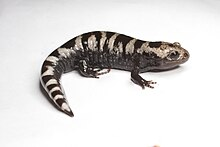
This is a mole salamander. He’s called that because he likes to dig burrows.
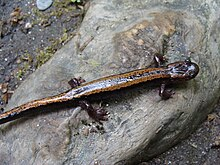
Here’s my cousin from Iberia, the gold-striped salamander. You can guess what it’s named after.
Stinky: The gold stripe on his back?
Ned: Correct!
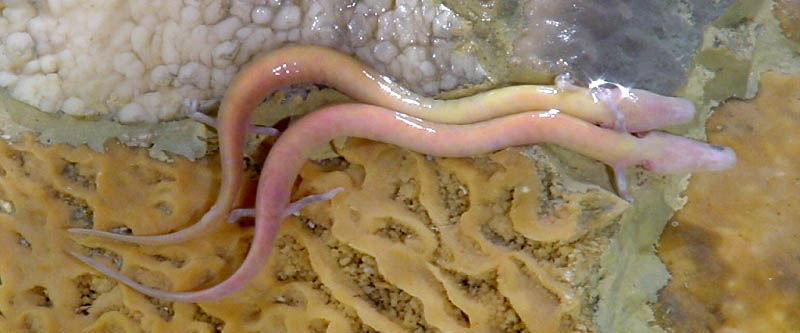
And this is my blind cousin from Europe, the olm.
Stinky: Blind? Oh, I’m sorry to hear that.
Ned: Not really blind, but their eyes are underdeveloped due to living in caves their whole lives. It makes up for it with a strong sense of smell and hearing.
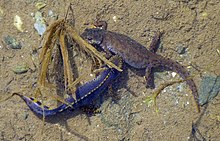
And finally, here’s some newts, which is what many people think is a separate species.
Jake: So, that means newts are a type of salamander?
Ned: Correct! Before I leave, can I sing a song to encourage those tadpoles out there?
Stinky: Can I join, too? I have a washboard I got from my beaver friend Harvey.
Jake: Alright, Stinky. And now, here’s Ned singing ‘Take the First Step’ with Stinky and Armstrong as backup singers.
Ned: Tadpoles, get your chins up. It could be worse.
You could have your feet stuck down in the Earth!
But I don’t see roots growing from your toes.
Just four stubby little feet, and they’re revving to go!
Armstrong and Stinky: Take the first step!
Ned: And soon, you will see
Just how brave your heart can be!
Come on up to the sky and take that first step!
Stinky: And kiss those fears goodbye!
Ned: Destiny is calling, so listen up please!
And you can hear the rhythm down deep in your knees.
One foot, then the other, your journey has begun.
And before you even know it, you're ready to run!
Armstrong and Stinky: Take the first step!
Ned: And soon, you will see
Just how brave your heart can be!
Come on up to the sky and take that first step!
Stinky: And kiss those fears goodbye!
Ned: Now that you’re on land, life is a breeze
You can jump and swim anywhere that you please!
Just remember that you need to keep your skin wet
And you also don’t want to end up as a human’s pet!
Armstrong and Stinky: Take the first step!
Ned: And soon, you will see
Just how brave your heart can be!
Come on up to the sky and take that first step
Stinky: And kiss those fears goodbye!
(Bunnie walks over and sees Armstrong singing)
Bunnie: Come on, Armstrong. We need to host the Animal Awards!
Armstrong: Alright. Let’s get over to the counter.
Bunnie: Today’s Animal Award goes to the animal that has been on Earth the longest! Could it be… the horseshoe crab?
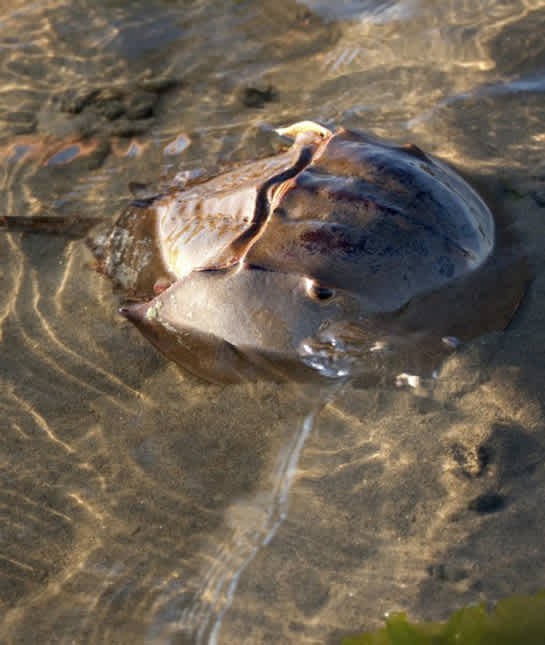
Armstrong: The nautilus?

Bunnie: The sea sponge?

Armstrong: Or the coelacanth?
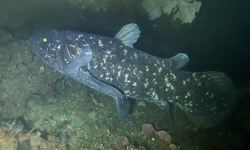
Bunnie: And the winner is… the sea sponge, which has been on this planet for 760 million years!
Armstrong: 760 million years?!? How long have hawks been around?
Bunnie: A few million years.
(cut back to Stinky and Jake)
Jake: And now, it’s time for a story. Today, it’s about a quail and a turkey.
Stinky: Are they examples of convergent evolution?
Jake: Yes, as a matter of fact. It's about two different birds, but they ultimately become good friends. "Once upon a time in California, there was a quail named Quincy. Quincy was shy and didn't like to make friends, but one day, a very social turkey named Tammy found Quincy sitting on a rock. 'Why are you all alone?' She asked Quincy. 'Birds of a feather flock together! 'Go away.' Said Quincy. 'I want to be alone.' 'No one should live alone! Come on and join my group!' Since Tammy was bigger than Quincy, she grabbed Quincy with her beak and placed her on her back. 'Next stop is who knows where!' Tammy exclaimed as she rejoined her flock. 'Who's that on your back?' Asked John Turkey, the leader of Tammy's flock. 'A turkey chick?' 'No, it's my new friend Quincy! He's a quail who was alone by himself, so I decided to make him my friend.' 'As long as he doesn't eat turkeys,' Said John. 'Then he's welcome to join our flock! Lunch time, everyone!' The turkeys dropped to the ground and started digging for worms. 'What are you doing?' Asked Quincy. 'We're digging for worms. Birds love to eat worms.' 'Worms? Yuck!' Said Quincy. 'I'm strictly a vegetarian. That means I eat plants, like seeds, leaves, and bulbs.' Suddenly, Quincy saw something that caught his eye. 'There's a dandelion on the ground.' 'A mountain lion?!' The other turkeys misheard. 'Run for your lives!' As the turkeys ran off, Quincy walked towards the dandelion and ate it. 'You don't have to be chicken.' He said. 'There is no mountain lion.' As the turkeys walked back, they realized that the 'mountain lion' was gone. 'Huzzah!' They cheered. 'Quincy defeated the mountain lion!' Tammy put Quincy back on her back and she started talking again. 'You know, I think we'll make the best of friends.' And so, Quincy became more social with the turkeys, and they all lived happily ever after. The end."
Stinky: That was a good story, Jake, though a little long. Don't the turkeys know the difference between a mountain lion and a dandelion?
Jake: To put it simply, Stinky, turkeys are four cents short of a nickel.
(cut to Bunnie and Armstrong in front of the habitat door)
Bunnie: Okay, Armstrong. It’s Habitat Time! Today, we’re going to New Zealand!
Armstrong: New Zealand? Where is that?
Bunnie: A few miles away from Australia.
Armstrong: So, we’re going to Australia?
Bunnie: Despite being next to Australia, the two countries aren’t affiliated with each other. In fact, the humans of New Zealand are closer related to those from Hawaii than Australia!
Armstrong: How about that?
Bunnie: (opens the door) Let’s go!

Even though it’s not as popular as Brazil, Africa, or Australia, New Zealand still has a unique variety of animals.
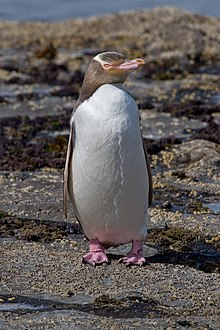
Armstrong: I thought penguins only live in the South Pole.
Bunnie: There are, in fact, some penguins found outside of Antarctica. This yellow-eyed penguin is native to only New Zealand, and is rather rare.
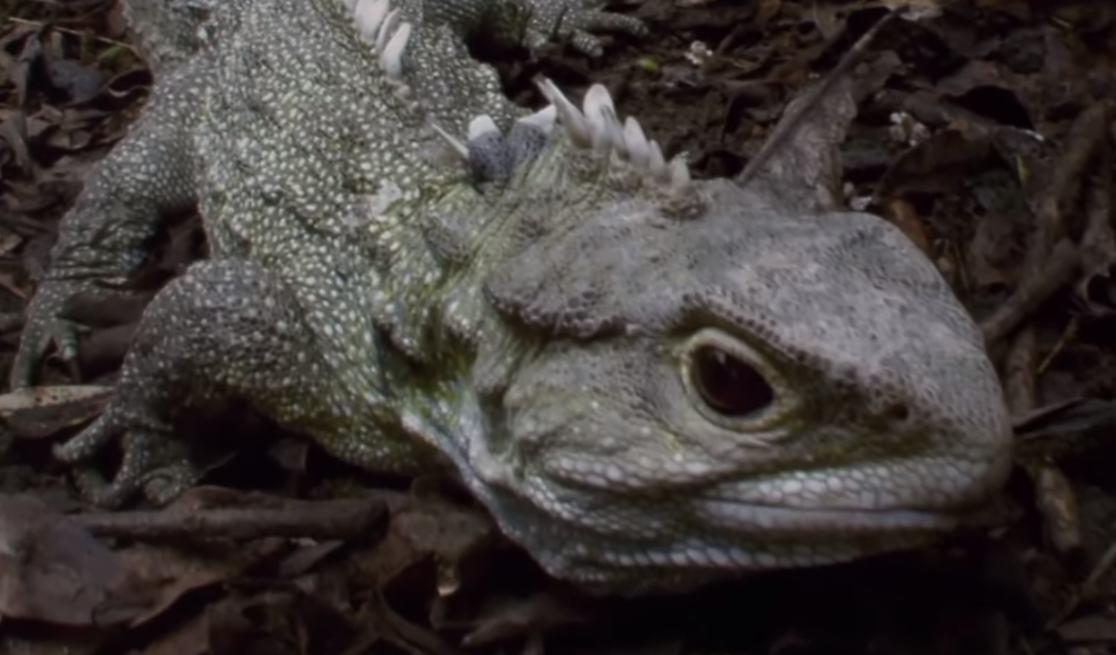
Armstrong: Hey, that looks like Toby!
Bunnie: That’s because it is! Tuataras have been around since the time of the dinosaurs, yet they remained unchanged. They also have a third eye on top of their heads.
Armstrong: A third eye? I don’t see an extra eye.
Bunnie: That’s because only hatchlings have visible third eyes.
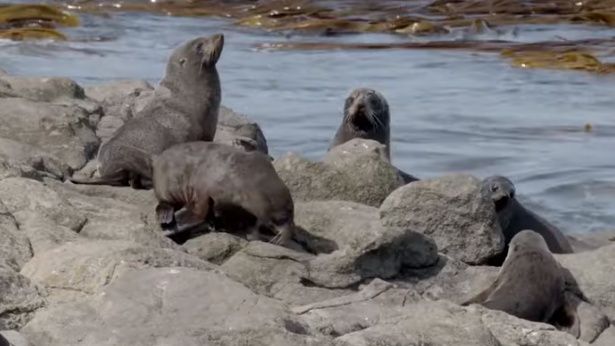
Armstrong: I didn’t know there are seals in New Zealand.
Bunnie: There are, in fact. These are New Zealand fur seals, otherwise known as kekono. They were hunted by humans, but they’re now a protected species.
Armstrong: Good thing I only eat mice and poultry.
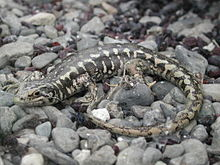
I see a lizard!
Bunnie: That’s an otago skink. Skinks are lizards found throughout New Zealand, and otago skinks are the rarest of them all.
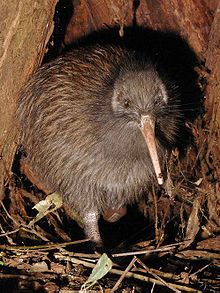
And last, but not least, a kiwi!
Armstrong: You mean like Clive?
Bunnie: Exactly! Even though they have no wings, kiwis still thrive by digging holes in the ground. Kiwis are so iconic that humans call themselves kiwis!
Armstrong: Does that mean kiwis call themselves humans? (wetas chirp)
Bunnie: I don’t think they thought it was funny, Armstrong. Besides, we have to go home.
(Bunnie and Armstrong leave New Zealand and head back to the Animal Show studio)
Bunnie: For Habitat Time, it’s Bunnie Bear-
Armstrong: And Armstrong the chickenhawk.
Bunnie: Just back from New Zealand.
(Tizzy flies around Stinky and Jake again)
Tizzy: Tizzy here! Time for a quiz! (cuts to the screen below)
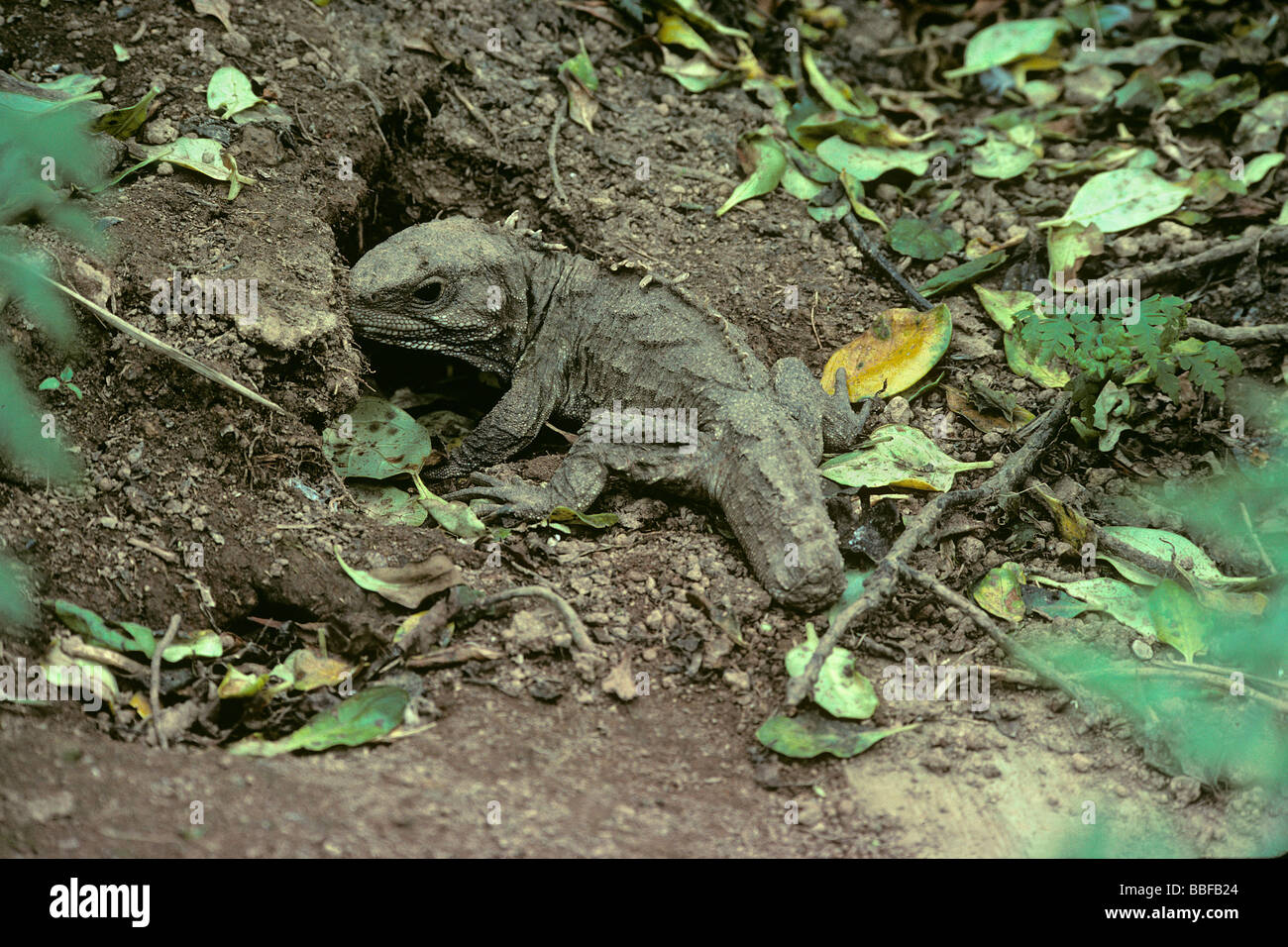
Can a tuatara grow back its tail when cut off? Give it a think. Back in a buzz!
(cut back to Stinky and Jake, who are having a hard time finding the answer)
Stinky: I think tuataras can grow back their tails. We had guests like that before!
Jake: I don’t think so, Jake. There are reptiles that cannot grow back their tails.
Tizzy: Maybe you should hear the question again. (flies back to the previous screen) Can tuataras grow back their tails? The answer is yes, but it takes a long time. Bee-lieve it, because it’s true!
Jake: Thanks for the quiz, Tizzy. That's all the time we have today, and until next time, keep seeing the world through the eyes of animals. Bye!